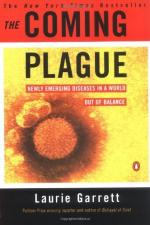|
This section contains 590 words (approx. 2 pages at 400 words per page) |

|
Chapter 9: Microbe Magnets and Chapter 10: Distant Thunder Summary and Analysis
Chapter 9 explains that prior to 6000 B.C., large cities were rare, and most of the illness threats were parasitic, or transmitted by insects. Over time, as cities grew, microorganisms had many more opportunities to infect. Pandemics are recorded in historical accounts, and those diseases included smallpox, plague, typhus, leprosy, syphilis, bubonic plague, and, by 1346, the Black Plague had erupted, killing millions. The Great Plague hit London in 1665, killing over one hundred thousand. Leprosy was another killer in Europe, followed quickly by tuberculosis. TB also came to the Americas with the settlers, and by the Civil War, TB was rampant. In the US, the crisis peaked in 1830 and 1896 with the onset of cholera pandemics spread through fetid water systems. Blamed on the filth in the cities, reforms followed in some...
(read more from the Chapter 9: Microbe Magnets and Chapter 10: Distant Thunder Summary)
|
This section contains 590 words (approx. 2 pages at 400 words per page) |

|




